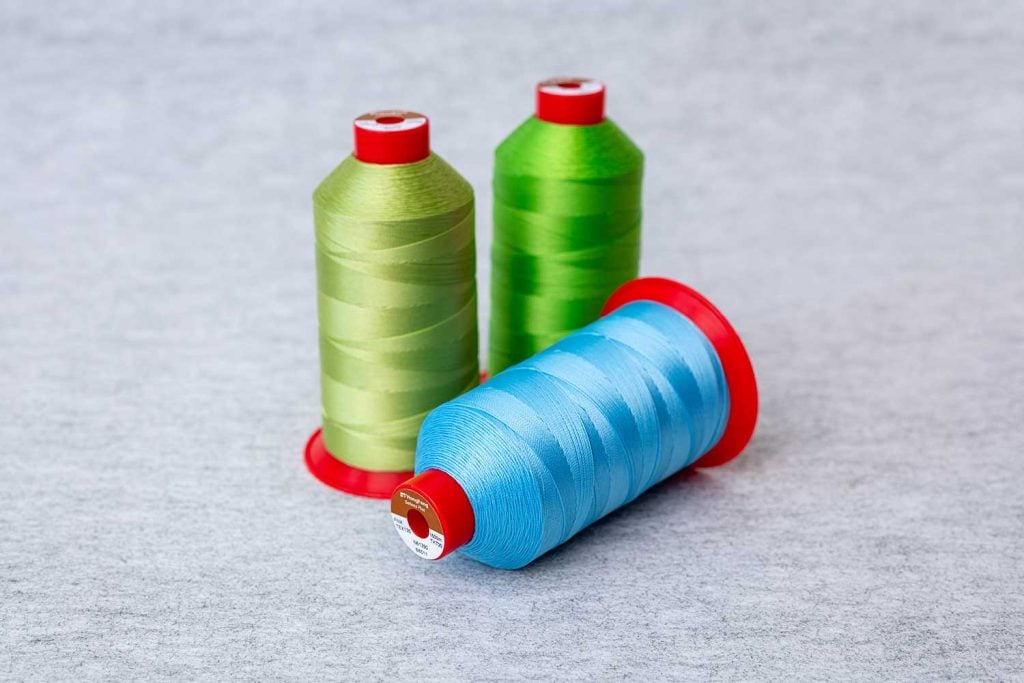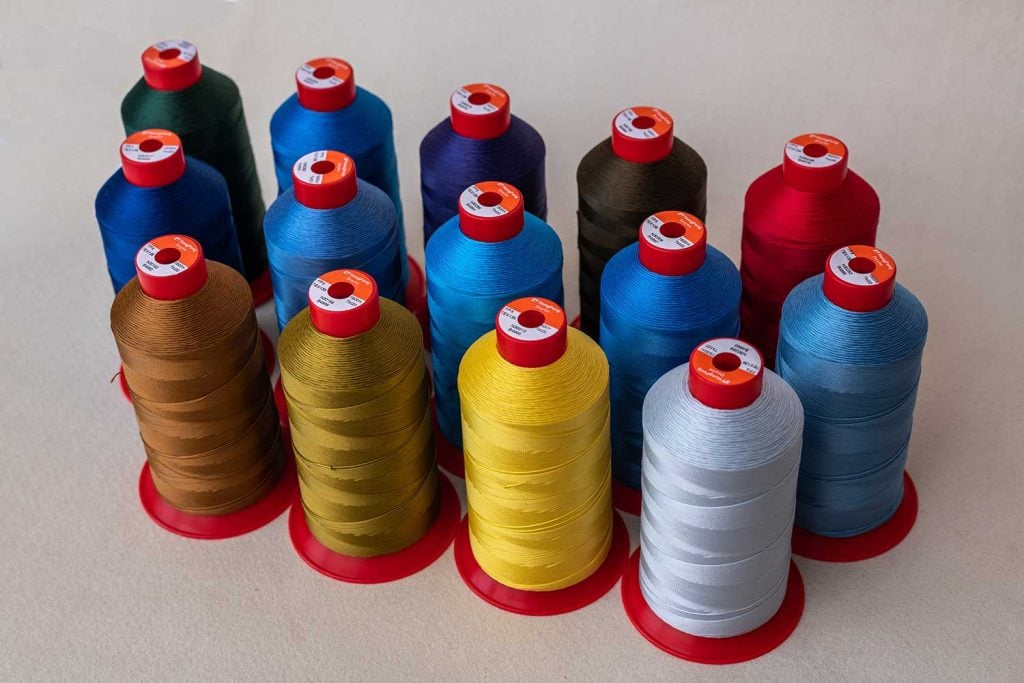Table of Contents
What Is the Difference Between Ticket Size and Tex Size for Industrial Sewing Thread?
Industrial sewing thread sizes are communicated through various numbers and numbering systems which are derived by relating their unit length and weight.
It’s common to see threads labeled with a ticket number or Tex size. But what does that number mean?
Industrial sewing thread size mainly by Ticket number and Tex size. Although it’s easy to get caught up in the lingo and confuse the two, the Ticket number and Tex size are distinct characteristics of a bonded thread.


Read More: Nylon & Polyester Filament Thread at Best Price
Tex Size
The term “tex size” most likely derives from the word “textile” and is a universal measurement that allows consistency in sizing. The International Organization for Standardization (IOS), a global consortium of standards experts, prefers tex sizing for yarn and thread over other methods of measurement. It’s in use, especially in Canada and Europe, and it’s not unusual to see threads marked in “tex” units even in the USA.
The Tex size of the thread is just one of several numbering systems that are classified as either direct or indirect systems. Tex falls under the direct system. It is the weight of a fixed length rather than the length of a fixed weight (indirect).
The higher the Tex number, the heavier the thread.
- Fine Tex Threads . . . . . . Tex 9 to Tex 19 (thin, embroidery, special)
- Medium Tex Threads . . . Tex 20 to Tex 69 (regular)
- Heavy Tex Threads . . . . . Tex 70 and higher (heavy duty, upholstery)
Tex size is the weight in grams of 1,000 meters of thread. For example, if 1,000 meters of a thread weighs 1 gram, tex size = 1.
So if 1,000 meters of a particular thread weighs 30 grams, it would be labeled tex 30, and if it weighs 35 grams, it would be tex 35, and so forth.
For example, A thread’s Tex is equal to the weight in grams of 1000 meters of that thread, so a heavier thread has a higher Tex. For example, if 1000 meters of a thread weighs 30 grams, it is Tex 30. Typical light-weight sewing threads range from Tex 8-25, medium-weight sewing threads are Tex 25-40, and heavy-weight sewing threads are Tex 40 and up.
Keep in mind that 1,000 meters of one individual weight type (lightweight, heavy-duty, etc.) of yarn will not weigh the same as 1,000 meters of another type, so they will have different Tex sizes even though they are the same length and fiber. So a medium-weight cotton at 1,000 meters might be tex 25, while a heavy-duty cotton at 1,000 meters might be tex 72.
Read More: Thread for Sewing Machine, Best Thread Suppliers
Ticket Size
A ticket number( ticket size) is yet another reference to the size of a thread. Ticket numbers typically resemble the fixed weight system, whereby the higher the number the finer the thread, and lower numbers will be thicker threads. It is a manufacturer’s reference to the final denier size of a given thread, with the denier being the weight in grams of 9,000 meters of thread. However, it’s not about the single’s denier size alone.
When you figure ticket size, you also have the impact of multiple thread plies, level of singles, ply twist, and overall twist contraction, which reduces the length and adds to the denier. So, to give a reference point for denier and ticket size, the rule of thumb is:
Singles denier x number of plies x 0.11 = ticket size. For example 1680 x 3 x 0.11 = ticket size #554.
Ticket size is not an exact calculation and due to minor differences in denier between substrates, different final denier sizes may lend to the same final ticket size.
Example of ticket size
Let’s look at an example of this.
A polyester that is ticket size 69 is made of 3 plies of 220 denier each, a total of 660 denier x 0.11 = 72.6. Nylon that is ticket size 69 is made up of 3 plies of 210 denier, which equals 630 denier x 0.11 = 69.3. The same ticket size will be given to both and they will also be given the same tex size of 70.
Read More: High Strength Sewing Thread – Best Heavy Duty Thread
Tex Size conversion to Ticket Size
To arrive at a ticket number from a tex size, use the following calculation: 1000/tex size x 3. For example 1000/Tex 40 x 3 = ticket 75.
Works Cited: What Is the Difference Between Ticket Size and Tex Size for Bonded Thread?